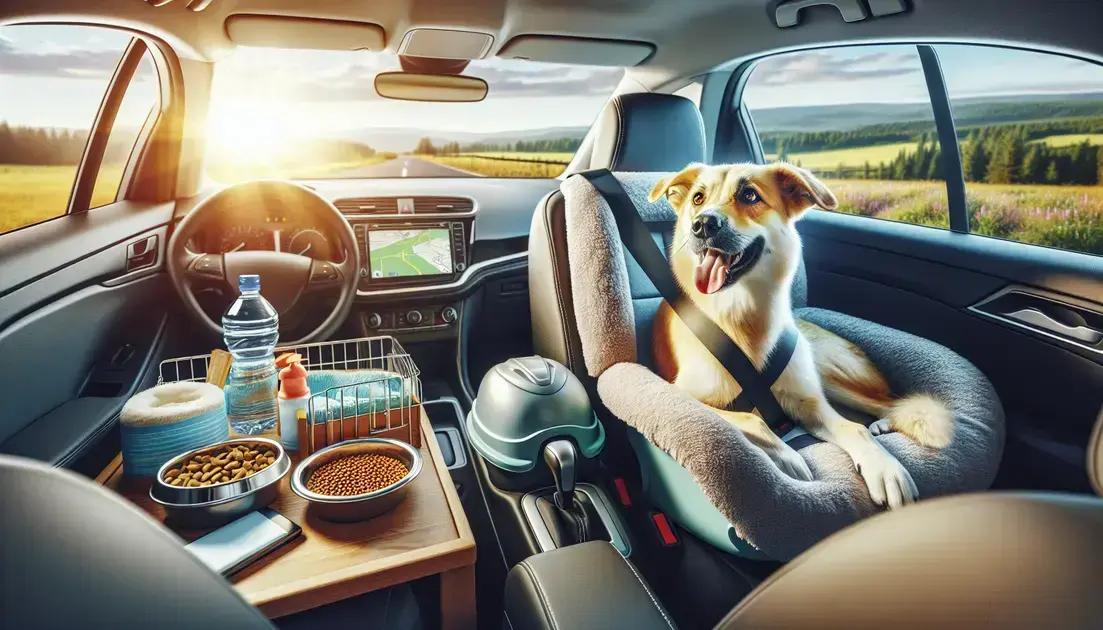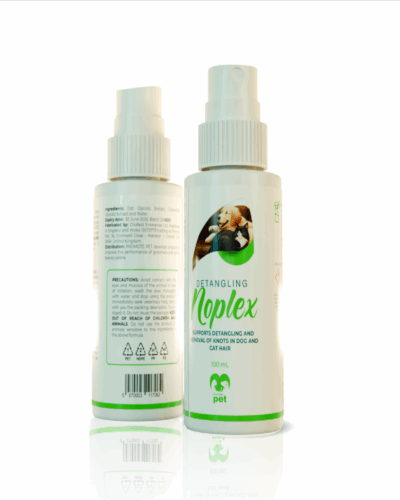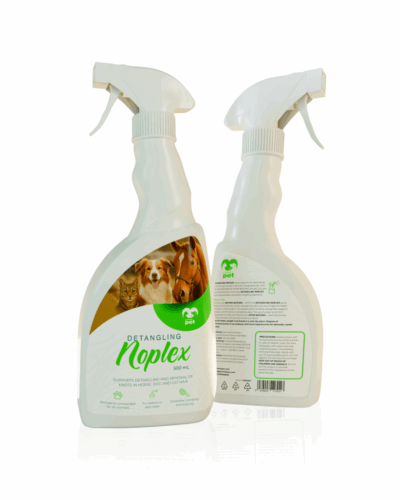Free delivery for orders over £45

How to Introduce a New Dog to Your Home Smoothly
Table of Contents
Bringing a new dog into your home is both exciting and nerve-wracking. Understanding the process of a new dog introduction is crucial for a seamless transition. From preparing your living space to ensuring your puppy feels comfortable, this guide will take you through essential tips for welcoming your canine companion. With the right approach, you can help your dog adjust smoothly, setting the foundation for a happy life together.
Preparing Your Home for a New Dog
Before your furry friend arrives, it’s essential to make your home a safe haven. Clear potential hazards, such as loose wires or small objects, that could be chewing targets. Secure cabinets containing cleaning products and medication, as curious noses might take a peek.
Designate a cosy pet-friendly zone that acts as their sanctuary. This space should have all dog essentials including a comfy bed, fresh water, and some toys. Bringing stability is key, so provide familiar scents by using blankets or toys they’re accustomed to.
Introduce boundaries gradually. Use baby gates to section off areas that are off-limits. This not only protects your belongings but gives your new companion a manageable space to explore initially.
Enrich their environment with stimulating toys and puzzles. This not only keeps them entertained but also assists with mental development.
Temperature is important too. Ensure that the area is neither too hot nor too cold, providing comfort during their adjustment period.
Having your dog’s essentials prepared beforehand helps streamline their transition. Include food, treats, a leash, and your chosen training tools.
Establish a Feeding Area
Pick a low-traffic spot for meals, reinforcing a routine by feeding at the same times each day. This promotes security and contributes to settling them into their new environment.
Meeting Your New Dog for the First Time
When meeting your new dog for the first time, it’s vital to do so in a calm and welcoming manner. Dogs are naturally sensitive to human emotions, so maintaining a relaxed atmosphere will help ease any potential anxiety they might feel.
Allow Your Dog to Approach
Allow your new pet to approach you at their own pace. Kneel or sit on the ground to appear less intimidating, and let them sniff you first. Avoid direct eye contact initially, as it can be perceived as a challenge.
Offer Treats
Providing a treat can be a great way to start the relationship. It can help create a positive association with you. Ensure the treats are wholesome and in small quantities.
Observe Their Body Language
Pay attention to your new dog’s body language. Signs of fear or aggression, like a tucked tail or raised fur, should be noted. If these signs appear, give them more space and time to adjust.
Using a gentle voice and soft strokes on their back can reinforce a sense of security. Remember, this moment is about building trust, so be patient and allow your dog to adjust at their own speed.
Finally, ensure that other family members or pets keep their distance until your dog is comfortable. Having too many people around can be overwhelming, especially in a new environment.
First Days at Home: What to Expect
When bringing a new dog home, their initial reactions might vary. Some dogs might feel excited, while others might be a bit apprehensive. Understanding these mixed emotions is crucial for a seamless transition.
During the first few days, give your dog time to explore their new surroundings. Encourage them gently with positive reinforcement. You might notice your dog checking out different corners or sniffing around unfamiliar spots, which helps them get familiarised with the environment.
It’s advisable to monitor eating habits. Some pets may eat immediately, while others might skip meals due to stress from the change in environment. Ensure fresh water is always available.
Sleeping patterns may also vary; some dogs will nap often due to the mental stimulation of a new home. Observe their behaviours and adjust their sleeping area to maximise comfort and security.
During walks or playtime, it’s essential to maintain a consistent routine. This consistency helps your dog to adjust and feel safe in their new environment. Engage with them using toys and short training sessions to establish trust and connection.
Consider keeping interactions calm without overwhelming them with too many visitors. Familiarise them with each family member gradually; this reduces anxiety and helps build a sense of belonging.
Ultimately, providing a stable and nurturing atmosphere helps a new dog adapt and thrive in their new home. Prioritising their comfort and security will facilitate bonding between you and your new furry friend.
Creating a Routine and Boundaries
Establishing routines and boundaries is key to a smooth adjustment for your new dog. Start by setting consistent meal times. Dogs thrive on routine, so feed them at the same time each day. This predictability helps them feel secure.
Setting clear boundaries is also essential. Decide which areas of the house are off-limits. Use baby gates or closed doors to restrict access initially. This not only keeps your dog safe but also prevents unwanted behaviour, such as chewing on inappropriate items.
Crate Training as a Safe Space
Introduce crate training early on to provide a sense of security and a safe space for your dog. Make the crate inviting with soft bedding and toys. Limit crate time to short periods at first, gradually increasing as your dog becomes comfortable.
Implementing Commands
Teach basic commands like sit, stay, and come right from the start. Use positive reinforcement such as treats and praise to encourage good behaviour. This not only enhances communication but also strengthens your bond.
Consistent exercise is crucial. Walk your dog regularly to expend energy and prevent boredom. This is also a great opportunity to reinforce training and observe how they’re adapting to their new environment.
Maintaining a calm environment is crucial to help reduce stress. Avoid excessive noise and activity, especially during the first few days. Keep socialisation and new experiences gradual to prevent overwhelming your dog.
Finally, patience is vital. Adjusting to a new home takes time, but with consistent routines and boundaries, your dog will soon feel secure and comfortable.
Socialising Your New Pet
Introducing a new pet to your household is both exciting and challenging. Socialisation plays a crucial role in ensuring your dog grows up to be a well-adjusted member of your family. From early exposure to different environments to meeting various people, these experiences shape their personality and behaviour.
Understanding Your Dog’s Needs
Every dog is unique, and understanding their specific social needs is essential. Observe your pet’s reactions to different settings and interactions. Some dogs might be naturally outgoing, while others are shy. Tailor your approach based on these observations to foster positive experiences.
Gradual Exposure
Introduce your dog to new experiences at a comfortable pace. Start with controlled environments, such as a quiet park visit or inviting a friend over, to ensure they don’t feel overwhelmed. Gradual exposure helps your pet build confidence and adapt smoothly to their surroundings.
Positive Reinforcement
Rewarding your dog for calm and friendly behaviour is critical in socialisation. Use treats or verbal praise to reinforce positive interactions with other animals and people. This technique helps to associate good behaviour with positive outcomes, encouraging repeat actions.
Introducing Other Animals
Ensure initial meetings with other pets are controlled and calm. Keep dogs on leashes and allow them to sniff each other from a distance. Monitor their body language closely to gauge comfort levels. Gradual and supervised introductions are key to avoiding conflicts and building friendships.
Investing time in socialising your new pet strengthens the bond between you and helps integrate them into various social settings successfully.
Addressing Common Adjustment Issues
Adjusting to a new home can be challenging for any dog, whether young or mature. Some dogs may display anxiety or timidness, while others might be hyperactive or nervous. Identifying these common adjustment issues early can help you address them effectively. Here are some typical challenges you might encounter:
Separation Anxiety
This is common in dogs transitioning to a new home. Signs include whining, barking, or destructive behaviour when left alone. To mitigate this, gradually increase the time you’re apart, ensuring they have engaging activities or toys during your absence.
Adjustment to New Spaces
Dogs might feel overwhelmed in unfamiliar environments. Allow them to explore at their own pace. Creating a safe space, such as a bed or a crate in a quiet area, provides them with a retreat. Let them sniff around and introduce each room slowly with positive reinforcement.
Changes in Eating Habits
It’s normal for new dogs to experience changes in appetite. Maintain consistency with their previous diet initially, then gradually transition to your preferred food. Observe their eating patterns to ensure they receive adequate nutrition.
Interacting with Other Pets
If you have other pets, introduce them gradually in controlled environments. Supervise initial meetings, ensuring tolerance and friendliness. Be patient as they establish a hierarchy and adjust to each other’s presence.
Establishing Trust
Trust is built over time through consistent and positive interactions. Engage in regular play, training sessions, and gentle handling. These activities reinforce security, helping your dog feel more at ease in their new environment.
Building a Lasting Bond with Your Dog
Developing a strong relationship with your dog is essential for a harmonious living environment and a happy pet. Bonding with your furry friend requires time, patience, and consistency. One way to strengthen this bond is through
consistent positive reinforcement
. Rewarding good behaviour with treats, praise, or affection encourages your dog to trust and respect you.
Ensure you spend quality time with your pet daily through activities like walks, playtime, or training sessions. It’s essential to understand your dog’s body language and expressions as it strengthens communication and helps in building trust. Respond to your dog’s social cues and provide comfort when needed.
Another crucial aspect is to create a safe space for your dog. A comfortable bed, toys, and a quiet area can make them feel secure and relaxed. Engage in regular exercise to keep them physically active and mentally stimulated, reducing anxieties or behavioural issues that could strain your relationship.
Grooming and petting
are not only beneficial for their health and hygiene but also an excellent way to connect and create a feeling of security.
Setting up a consistent daily routine, including meal and walk schedules, will help your dog understand what to expect, adding to their sense of stability and confidence in your relationship. Remember, patience is key; every dog adjusts at their own pace, requiring a gentle and understanding approach. Gradually, your compassion and efforts will result in a lasting and rewarding bond.
Contact Us
- +44 07391626201
- info@promotepet.com
- 16, Cromwell Close - Oxford - UK
COPYRIGHT © PROMOTE PET. ALL RIGHTS RESERVED. © 2024 Chofard Enterprise Ltd. Chofard Enterprise is a company registered in England and Wales with a company number 13073779 VAT number GB 370644889. 16, Cromwell Close, Oxford OX30RW, United Kingdom – trading as Promote Pet Online Shop.











